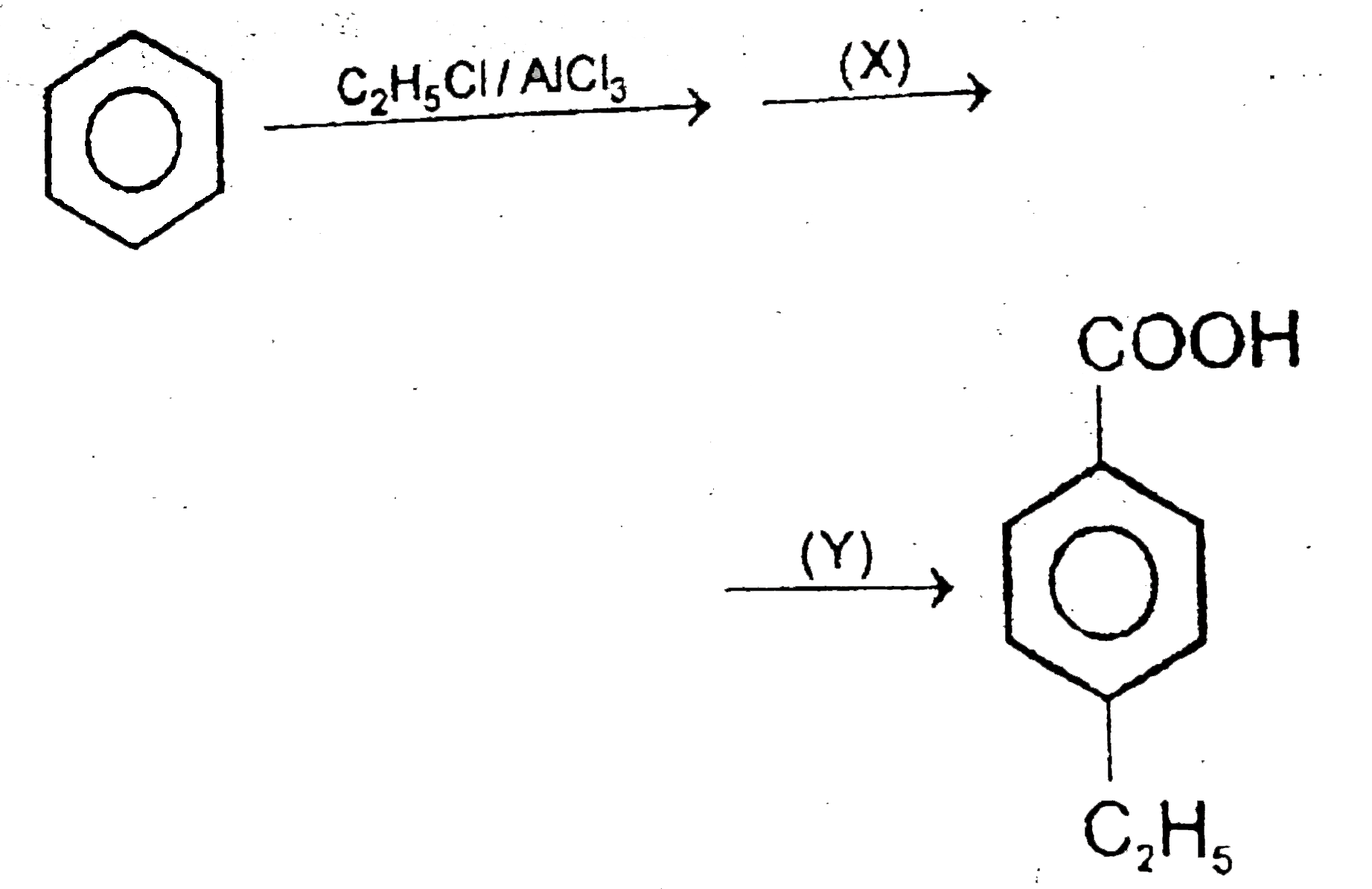When a reagent (X) reacts with Fe3+ salt solution turnsred due to the formation of a compound (Y). This reagent cause no change in colour with Fe2+ salt solution. Compound (X) and (Y) are respectively:
NH4SCNandFe(SCN)3
K4[Fe(CN)6]andFeSO4
Na2HPO4andFeSO4
K3[Fe(CN)6]andK2Fe[Fe(CN)6]
The correct Answer is:A
Fe3++3NH4SCN(X)→3NH+4+Fe(SCN)3(blood red colour solution)(Y)
NH4SCN has no change in colour with Fe2+.
Topper's Solved these Questions
- QUALITATIVE INORGANIC ANALYSISBOOK - VK JAISWALCHAPTER - QUALITATIVE INORGANIC ANALYSISEXERCISE - LEVEL 3
72 Videos
- QUALITATIVE INORGANIC ANALYSISBOOK - VK JAISWALCHAPTER - QUALITATIVE INORGANIC ANALYSISEXERCISE - ONE OR MORE ANSWER IS/ARE CORRECT
45 Videos
- QUALITATIVE INORGANIC ANALYSISBOOK - VK JAISWALCHAPTER - QUALITATIVE INORGANIC ANALYSISEXERCISE - SUBJECTIVE PROBLEMS
5 Videos
- PERIODIC PROPERTIESBOOK - VK JAISWALCHAPTER - PERIODIC PROPERTIESEXERCISE - ASSERTION-REASON TYPE QUESTIONS
35 Videos
- s-BLOCK ELEMENTSBOOK - VK JAISWALCHAPTER - s-BLOCK ELEMENTSEXERCISE - SUBJECTIVE PROBLEMS
2 Videos
Similar Questions
A white solid X reacts with dil. HCl to give colourless gas which is used in fire extinguishers. The solid X is
View SolutionCompound 'X' of molecular formula C4H10O on treatment wit Lucas reagent at room temperature gives compound 'Y'. When compound 'Y' is heated with alcoholic KOH, it gives isobutene. Compound 'X' and 'Y' are respectively.
View Solution
Knowledge Check

The reagents X and Y are respectively:AX=CH3COCl/AlCl3
Y=KMnO4/OHɵ/Δ, acidificationBX=CH3CH2Cl/AlCl3
Y=CrO3/H⊕/ΔCX=CH3COCl/AlCl3
Y=I2/NaOH, acidificationDX=KMnO4/OHɵ/Δ acidification,
Y=CH3CH2Cl/AlCl3When ammonia is added to cupric salt solution, the deep blue colour is observed it is due to the formation of:
A[Cu(OH)4]2−B[Cu(NH3)4]2+C[Cu(H2O)2(NH3)2]2+D[Cu(H2O)4]2−When ammonia is added to cupric salt solution, the deep blue colour is observed it is due to the formation of:
A[Cu(OH)4]2−B[Cu(NH3)4]2+C[Cu(H2O)2(NH3)2]2+D[Cu(H2O)4]2−
Calcium phosphide reacts with water or dil. HCl and give a compound 'X', which fails to react with HCl but produces dense white fumes with HI(g) due to formation of 'Y'. Compound X and Y respectively
View SolutionCO2 gas along with solid (Y) is obtained when sodium salt (X) is heated. (X) is again obtained when CO2 gas is passed into aqueous solution of (Y). (X) and (Y) are respectively
View SolutionCO2 gas along with solid (Y) is obtained when sodium salt (X) is heated. (X) is again obtained when CO2 gas is passed into aqueous solution of (Y). (x) and (Y) are respectively
View SolutionAn organic compound gives silver mirror with Tollen's reagent and reduces the colour of Schiff's reagent but does not give a red ppt. with Fehling's solution. The compound is :
View SolutionAn compound react with Hinsberg's reagent gives a product which is soluble in alkali solution (NaOHsolution) compound is :
View Solution
